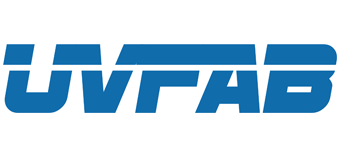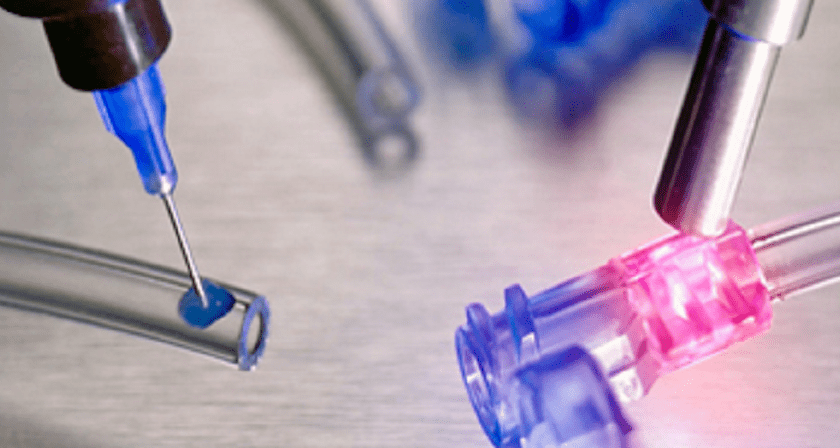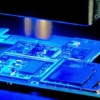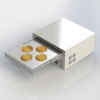UV Curing of Adhesives
Basics of Light Curing
What is a UV curing adhesive?
UV curing adhesives, often called light curing adhesives, are adhesives that cure when illuminated with light. But not just any light – different adhesives are adapted to cure at different wavelengths. Usually it is within the spectrum of UV-A or ‘blue light’, i.e. approximately 365 nm to 405 nm, which is why the term UV curing adhesive has been developed.
A light curing adhesive is not really a type of adhesive, but a curing mechanism. There are for example light curing acrylics, epoxies, silicones and cyanoacrylates.
How do light curing adhesives work?
There are, as mentioned, several different types of light curing adhesives and they are based on different chemistries. What they have in common is that the adhesive formulations contain monomers and oligomers (building blocks for the adhesive) and some type of photoinitiator (small molecule that initiates the curing reaction with the help of light).
When the photoinitiator absorbs light of a certain wavelength and intensity, it starts a polymerization reaction – the adhesive cures. It is important to make sure that the adhesive matches the UV lamp meant to be used: Intensity, wavelength of light, LED or broad spectrum, and the configuration of the lamp are all important aspects to consider.
The light from a lamp must have an intensity over 50 mW/cm2. Sun light, which has an intensity around 2-5 mW/cm2 will thereby not suffice.
So long as the adhesive bond is illuminated by the light, the reaction carries on. However, if the light is removed too early, the reaction pauses. Consequently, it is important to cure a light curing adhesive the correct amount of time. Too short curing time leads to incomplete cure (which is why a safety factor is incorporated) and too long cure time can cause degradation of the adhesive. Degradation will weaken the bond and cause discoloration. Exposing the adhesive to 2-3 times the recommended dose is usually ok.
When are UV curing adhesives used?
Light curing adhesives are first and foremost used when a fast cure speed is desired. Often, a full cure is achieved in seconds and that is also the main advantage of this type of adhesive.
There are certain requirements that must be fulfilled to be able to use light curing adhesives for an application.
Probably, two materials (‘substrates’) are being bonded together. This means that at least one of these materials must transmit the light so that it can reach the bond line. All materials do not have 100 % transmission of UV/Vis light and a transparent material is required. In addition, some plastics, for example, can be UV blocking, even though they are transparent. In some cases, the plastic can be cured with blue light (405 nm).
Advantages with light curing adhesives
- Extremely fast cure: When illuminated by curing a lamp, a light curing adhesive will often cure in just a couple of seconds. This gives a very efficient process.
- On-demand cure.
- One component: UV curing adhesives are almost always 1-component products and no mixing is necessary.
- Solvent free: Since the formulation of the adhesive can contain very short chains and even monomers, low viscosity products are possible without the use of solvents.
- Long shelf-life.
- Fluorescence: Some UV curing adhesives formulations contain fluorescents to enable fast and easy inspection of the bond in quality control. There are those that fluoresce in blue but also in red if the bonded substrate should happen to fluoresce in the same color.
- See-Cure technology: This technology results in a change of color as the adhesive cures. It will go from its uncured blue color to transparent which enables easy verification of full uv cure.
- Partial curing is possible: Curing can be begun at one occasion and continued at another if needed..
- Low toxicity: After curing, UV curing adhesives are not toxic and there are even medical grade adhesives to choose from for use in needle bonding, catheter bonding or other medical equipment.
- Secondary cure mechanisms posssible: If you have a shadowed area where the light from your UV lamp cannot reach, an adhesive with a secondary curing mechnism can be an alternative. This mechanism could be moisture curing, heat curing or anaerobic curing.



 UVFAB Systems
UVFAB Systems